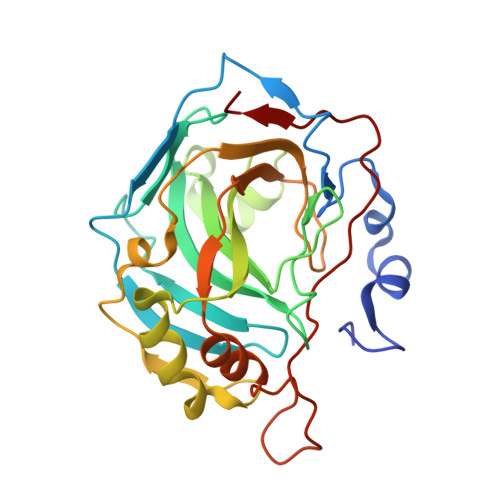Sulfonamide Inhibitors of Human Carbonic Anhydrases Designed through a Three-Tails Approach: Improving Ligand/Isoform Matching and Selectivity of Action.
Bonardi, A., Nocentini, A., Bua, S., Combs, J., Lomelino, C., Andring, J., Lucarini, L., Sgambellone, S., Masini, E., McKenna, R., Gratteri, P., Supuran, C.T.(2020) J Med Chem 63: 7422-7444
- PubMed: 32519851
- DOI: https://doi.org/10.1021/acs.jmedchem.0c00733
- Primary Citation of Related Structures:
6WQ4, 6WQ5, 6WQ7, 6WQ8, 6WQ9 - PubMed Abstract:
The "tail approach" has become a milestone in human carbonic anhydrase inhibitor (hCAI) design for various therapeutics, including antiglaucoma agents. Besides the classical hydrophobic/hydrophilic division of hCAs active site, several subpockets have been identified at the middle/outer active sites rim, which could be targeted to increase the CAI isoform selectivity. This postulate is explored here by three-tailed benzenesulfonamide CAIs ( TTI ) to fully exploit such amino acid differences among hCAs. In this proof-of-concept study, an extensive structure-activity relationship (SAR) study was carried out with 32 such benzenesulfonamides differing in tails combination that were assayed for hCAs I, II, IV, and XII inhibition. A structural study was undertaken by X-ray crystallography and in silico tools to assess the ligand/target interaction mode. The most active and selective inhibitors against isoforms implicated in glaucoma were assessed in a rabbit model of the disease achieving an intraocular pressure-lowering action comparable to the clinically used dorzolamide.
Organizational Affiliation:
Department NEUROFARBA - Pharmaceutical and nutraceutical section, University of Firenze, via Ugo Schiff 6, 50019 Sesto Fiorentino, Florence Italy.

















